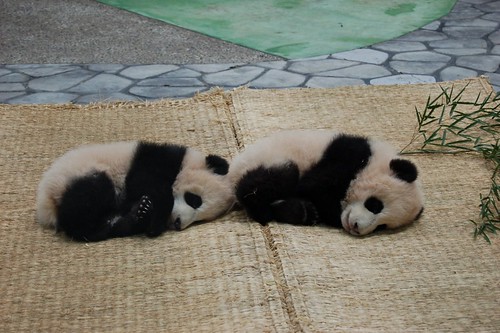Welcome to Word Buzz Wednesday, in which we round up our favorite buzzworthy words of the week. The latest: why baby pandas are so ridiculously tiny; you can inherit your ancestors’ stress; some really expensive balls.
altricial
“The opposite of altricial is precocial. A chick freshly hatched from the egg is precocial, walking around, eating and peep-peeping up a storm. A human baby, however, emerges on the altricial side of the spectrum.”
Joel Achenbach, “Why giant panda cubs are so incredibly tiny,” The Washington Post, August 25, 2015
Altricial is, as a senior scientist at the National Zoo puts it, “a fancy word that means pretty much helpless.” Hairless, teeny-tiny giant panda bear cubs are “extremely altricial” due to pandas’ very low metabolism and, as a result, the females’ relatively low blood-oxygen level.
Cubs have a better chance at surviving if they can breathe fully oxygenated air — that is, air outside their mothers — as well as obtaining fatty acids through their mothers’ milk, acids that can’t be passed through the placental barrier.
The word altricial ultimately comes from the Latin altor, “nourisher.”
epigenetic inheritance
“The new study, published in Biological Psychiatry, is the first example that shows how epigenetic changes in humans caused by trauma can be inherited.”
Akshat Rathi, “The Holocaust is still traumatizing the children of survivors on a genetic level,” Quartz, August 24, 2015
Epigenetic inheritance refers to “genetic changes caused by environmental factors, such as smoking, diet, or stress.” While most epigenetic changes are erased during fertilization, says Quartz, some manage to slip through although researchers still aren’t sure how this happens.
For more on epigenetic inheritance, check out this great podcast from Stuff You Should Know.
hypomania
“[Trump] reports, for example, ‘I usually sleep only four hours a night,’ which by itself is usually a pretty reliable indicator of hypomania, and something he boasts about.”
John Gartner, “Donald Trump and Bill Clinton Have the Same Secret Weapon,” New Republic, August 25, 2015
Hypomania is “a mild state of mania, especially as a phase of a manic-depressive cycle,” but, as New Republic says, hypomanic temperament “is not an illness.” While it may manifest “the same traits as mania,” it “does so to a less severe and more functional degree.”
limerence
“The first stage is called ‘limerence.’ This is the spine-tingling, heart-twisting, can’t-stop-staring feeling, when it seems as though the world stops whirling and time itself bows down and pauses before the force of your longing.”
Eve Fairbanks, “Love in the Age of Big Data,” Huffington Post, August 19, 2015
The Oxford English Dictionary describes limerence as:
the state of being romantically infatuated or obsessed with another person, typically experienced involuntarily and characterized by a strong desire for reciprocation of one’s feelings but not primarily for a sexual relationship.
In other words, puppy love.
The term limerence was an arbitrary coinage by psychology professor Dorothy Tennov.
shade ball
“In an article titled ‘Shade balls are a really stupid way to conserve water,’ LA Weekly reports that the city has actually been using shade balls since 2008, well before the drought began, and they aren’t actually designed to prevent evaporation at all.”
Katie Herzog, “Why shade balls aren’t such a great idea after all,” The Grist, August 19, 2015
Shade balls are black plastic balls that are supposed to work to prevent evaporation. Recently, Los Angeles dumped 96 million of such balls in the L.A. Reservoir to help combat drought. However, the balls weren’t designed to prevent evaporation, says The Grist, but to “block the formation of a carcinogen called bromate.”
This isn’t to say the balls don’t prevent some evaporation — namely, 300 million gallons of water a year, which is worth about $2 million dollars. Unfortunately, the balls cost $34.5 million.

Our primate relatives are quite precocial, and as Stephen Jay Gould pointed out decades ago, the reason human babies are altricial is that they are born as fetuses and remain fetuses, anatomically speaking, throughout their first year. This was a necessary consequence of our oversized skulls (by primate standards): few if any women could give birth to something the size of a 9-month infant (eek!) For one thing, such a woman would have to eat far more to support a huge fetus than is necessary just to make milk; for another, humans walk upright and couldn’t widen their hips very much more without starting to waddle.
Since then it’s also been pointed out that helpless babies encourage paternal care and human pair-bonding, not an issue for chimps and gorillas. We do, however, retain the typical precocial pattern of one or just a few infants per birth and large bodies as adults (only about 100 species of animals are larger than humans).